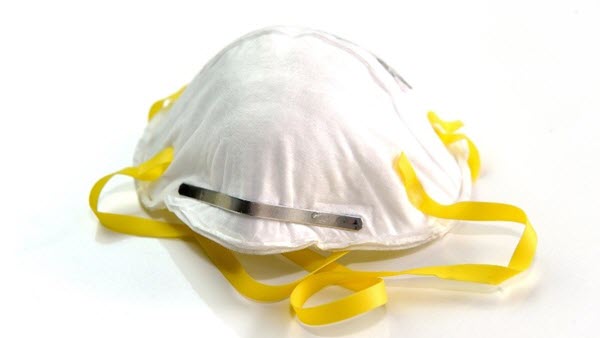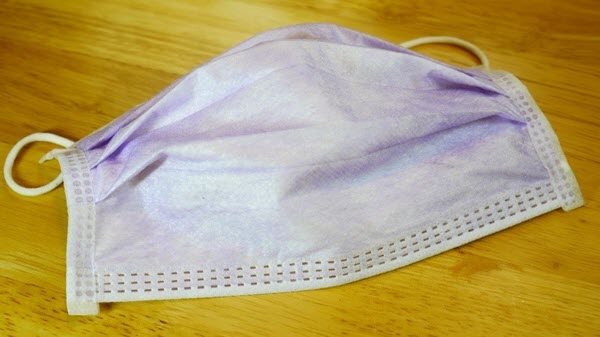.....

..................................................................................................................................................................................................................................................................
 |
| N95 respirator |
..............................................
 |
surgical mask
|
They may look similar, but they serve different purposes
BY ASHLEY ABRAMSON
To
prevent the spread of infectious diseases, many people reach for face masks —
and when pandemics like the coronavirus occur, there are sometimes even mask
shortages among the general public.
But
experts say masks aren’t always the best route for warding off infection, and
in the case of coronavirus, the CDC is specifically advising that people do not
need to wear face masks unless a health care worker specifically recommends it
to you, or you work in health care yourself, you already have COVID-19, or are
taking care of someone who does.
According
to Michael Chang, an infectious disease specialist at McGovern Medical School
at the University of Texas Health Science Center in Houston, masks are usually
used by health care providers in hospitals and clinics, where the risk of
transmitting or catching an illness is higher.
“In the health care setting we primarily use masks to
isolate people both the people who are taking care of patients as well as
protecting the patients from the providers potentially spreading something to
them,” he says. “They can offer
two-way protection.”
There
are two types of masks used in preventing infections: surgical masks and
respirator masks.
It’s
important to know the difference, and which situations they’re useful in, as
well as when other wellness hygiene tactics might better serve you.
How
are respirator masks different from surgical masks?
Surgical
masks and respirator masks serve different purposes, so they are designed
differently.
Andrew
Stanley Pekosz, a professor of molecular microbiology and immunology at Johns
Hopkins University Bloomberg School of Public Health, says surgical masks are
basically small pieces of cloth people use to keep the germs from their coughs
and sneezes to themselves, or to prevent picking up other people’s viruses and
bacteria.
“It’s really a general physical block to prevent major
amounts of fluid from accessing your mouth,” Pekosz tells Allure.
Respirator
masks, Pekosz says, are more sturdily designed than surgical masks, and they
contain a respirator that prevents much smaller particles from passing through
to a person’s respiratory system.
Two
of the most common respirator masks are N-95 masks and N-99 masks, which, when
used correctly, prevent 95 percent and 99 percent, respectively, of airborne
particles from entering a person’s mouth or nose.
Because
they filter out smaller particles, respirator masks also typically protect
against different kinds of pathogens, according to Irfan Hafiz, an infectious
disease physician with Northwestern Medicine.
Surgical
masks protect against droplet-spread infections, like influenza and other
common respiratory infections.
N-95
and N-99 respirator masks can protect against airborne illnesses like measles,
chickenpox, or tuberculosis.
Pekosz
says most illnesses are spread by droplets, which means a respirator mask is
considered a higher-level method of protection only needed for airborne
illnesses.
If
doctors aren’t sure about the way a disease spreads — like in the early stages
of an outbreak — Hafiz says doctors would recommend a higher level of
protection with a respirator mask.
When
are respirator masks used?
Sometimes,
Hafiz says, if a patient is sick and being transported or if someone is
coughing in the waiting room, doctors might put a surgical or respirator mask —
depending on the suspected illness — on a patient to temporarily avoid
transmitting sickness to others.
But
that’s the exception to the rule: Most of the time, it’s the health care
providers who wear masks, not patients or the general public, Hafiz tells
Allure.
Chang
says health care providers commonly wear surgical masks in the operating room to
prevent large particles from contaminating the surgical sites.
And
if a doctor suspects a viral or bacterial infection in a patient, health care
workers might wear surgical masks to prevent catching the illness if the
patient coughs or sneezes.
“Surgical masks can protect the provider from any
large droplets a patient might generate,” he says.
If
a health care professional is worried about airborne infectious diseases, Chang
says they may upgrade to an N-95 or N-99 mask.
But
a mask is rarely the only barrier: Chang explains health care providers also
use gowns, gloves, and sanitary practices to prevent spreading germs.
“A mask is rarely used by itself; it’s almost always
used as part of a system where we have multiple barriers against any infectious
particles,” he says.
Do
healthy people need masks?
Currently,
the Centers for Disease Control and Prevention (CDC) does not recommend the use
of masks by healthy people for preventing influenza; recently, the U.S. Surgeon
General tweeted to discourage healthy people from buying and wearing masks,
specifically during the 2020 coronavirus outbreak.
One
reason, Pekosz says, is there hasn’t been much proven benefit to show that
wearing a mask benefits the wearer’s health.
Respirator
masks can also be complicated to use, which is one reason they’re not recommended
to the public.
“N-95 masks are quite uncomfortable,” he says.
“Most of the general public can’t keep them on 100
percent of the time, which is what you need to do for them to be effective.”
What’s
the best way to prevent the spread of disease?
Since
masks aren’t necessarily the most effective way to prevent infection, what are
the best practices for decreasing the risk?
Hafiz
says if you’re feeling sick, it’s important to visit your doctor and avoid
going to work.
If
you are well and concerned, focus on handwashing with soap and water, and use
hand sanitizer containing at least 60 percent alcohol if you’re unable to wash
your hands, and follow the CDC’s most current guidelines.
“If it gets soiled, a mask can make things worse
instead of better,” Hafiz says. “It’s
probably really not helping that much if you’re feeling well. It may actually
in some ways hinder things.”
Pekosz
says over-reliance on masks may also neglect other important health practices,
like washing your hands, keeping a distance from people who are ill, and
staying home if you’re sick.
“When it comes to infectious diseases and
transmission, we build everything around multiple layers that allow you
multiple ways to protect yourself,”
he says.
“Those are the things when you have multiple put
together that you can start to see some significant protection from infectious
diseases.”
Ashley Abramson
CONTRIBUTOR
Ashley Abramson is a
writer-mom hybrid in Minneapolis, MN. She most frequently writes about health,
motherhood, culture, and the places they intersect.


No comments:
Post a Comment